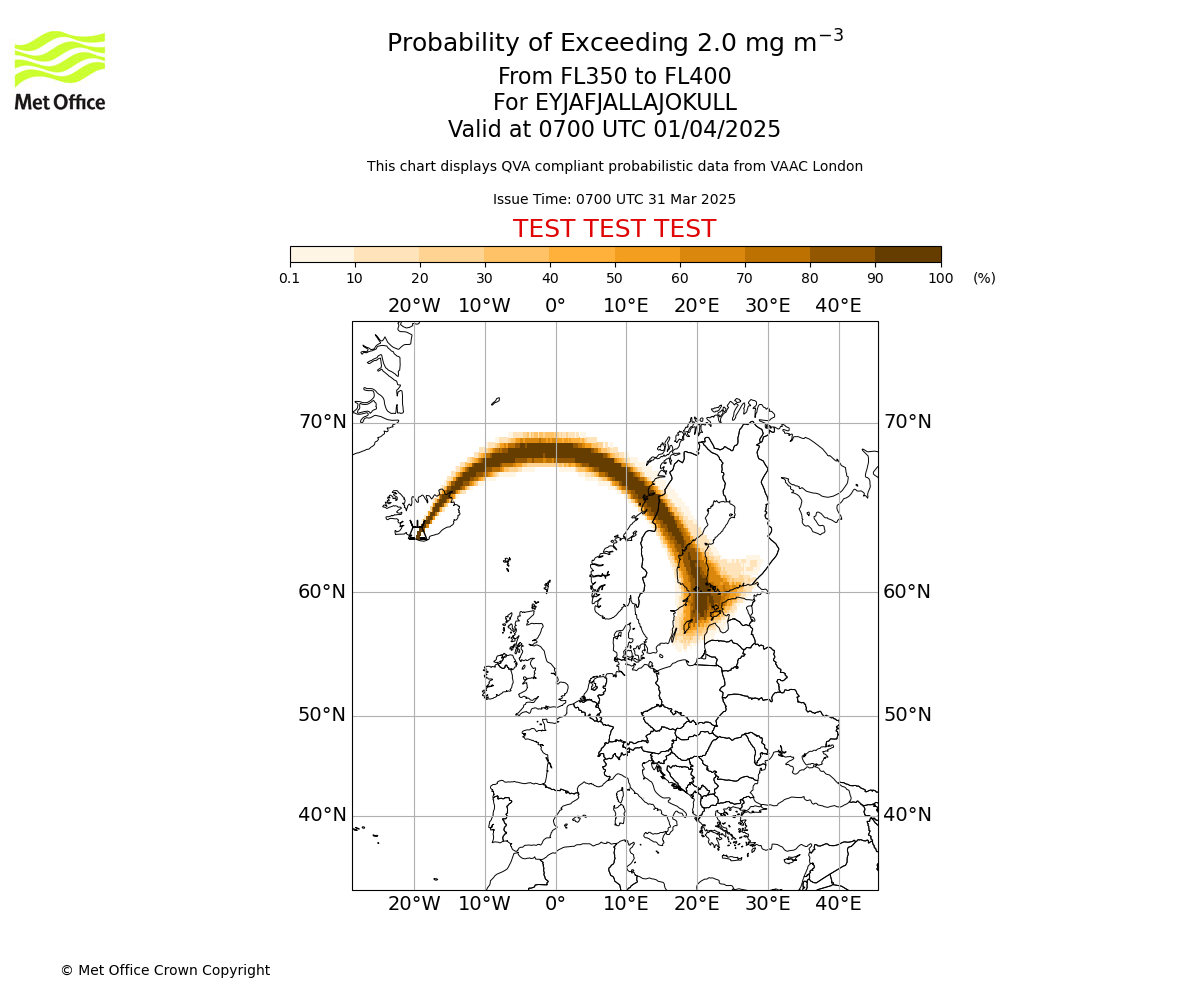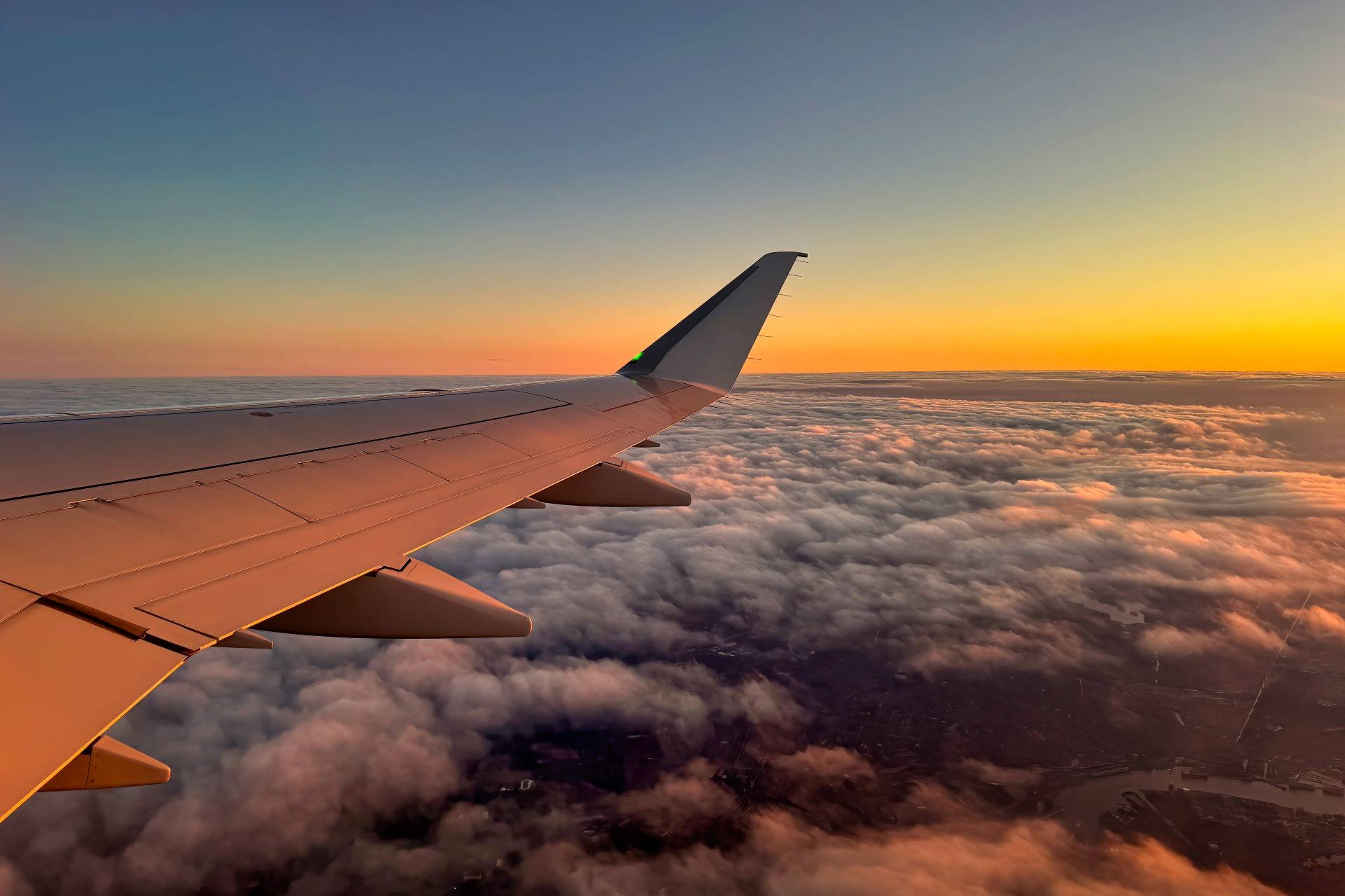Clearing the air: new Met Office service to cut aviation disruption from volcanic ash
Author: Press Office
00:00 (UTC) on Thu 27 Nov 2025
Fifteen years ago, the eruption of the Eyjafjallajökull volcano on Iceland closed large amounts of airspace across Europe, disrupting flights and leading to widespread cancellations and delays.
A new volcanic ash forecasting provision that launches on 27 November 2025 could halve the disruption and keep airspace open in the event of a similar eruption to the one in 2010.
The 2010 eruption demonstrated that ash produced by volcanic eruptions posed one of the greatest single short-term threats to air travel.
Volcanic ash encounters can cause significant problems to aircraft and if high concentrations of ash enters jet engines it can stop or severely damage them, as well as causing a range of other issues with the aircraft. At lower concentrations flights may operate through ash (if certified by their engine manufacturer, and if authorised by their CAA).
Ash forecast data provided by the Met Office - in its role as the London Volcanic Ash Advisory Centre (VAAC) - assists airlines with the decision-making process for where they can safely operate and reduces the amount of North Atlantic and European airspace that must be avoided.
VAAC London is responsible for issuing forecasts for volcanic eruptions originating in Iceland and the north-eastern corner of the North Atlantic.
Minimising disruption
The Met Office’s Mark Seltzer, Expert Operational Lead for VAAC London, said: “As we saw in 2010, volcanic ash eruptions in the north-east Atlantic can cause major air travel disruption due to dense flight routes and high seismic activity, resulting in widespread delays and cancellations between the UK, Ireland, Europe, the Far East and North America. And then of course there are the secondary impacts of those cancellations to the public, businesses, hospitality and the tourist industry.
“With our new service we estimate that the disruption today from an eruption of Eyjafjallajökull would be half of that experienced in April 2010.”
The Met Office is one of the first of the nine VAACs - in tandem with Meteo France (VAAC Toulouse) - to start producing the new higher-resolution Quantitative Volcanic Ash (QVA) forecasts required under International Civil Aviation Organization (ICAO) regulations on 27 November 2025. The seven other VAACs will follow one year later.
The Met Office’s new QVA service will be available free to all airlines and the aviation industry worldwide. It comprises gridded forecasts which provide the expected ash concentration for 12 horizontal slices of the atmosphere (from the ground up to approx. 60,000ft) as well as probability forecasts which indicate the likelihood that certain ash concentrations will be exceeded.

QVA Concentration Forecast (above): The image above shows how QVA forecast data can be displayed. In this example (it is not for a real eruption) the forecast ash for airspace between Flight Level (FL) 300 and FL350 (approximately 30,000 to 35,000ft) is shown for a single forecast timestep. The colours differentiate between ash of low, medium, high and very high concentrations. Forecasts are provided at 3-hourly intervals out to 24-hours.

QVA Probabilistic Forecast: The image above Illustrates the probability of exceeding an ash concentration of 2.0mg/m3 (one of four concentration threshold that data is provided for). It is valid for the same event, date and time as the QVA deterministic example.
Greater accuracy
With ever busier skies, the need for enhanced, more accurate and informative volcanic ash forecasts is growing. QVA forecasts provide higher-resolution detail and include both a single, specific forecast snapshot and probabilistic forecasts of ash concentration which provide greater understanding of the risks of the uncertainties of the dispersion of potentially harmful volcanic ash within the boundaries of an eruption.
The new forecasts are intended to support a shift away from traditional discernible/visible ash criteria, and instead take advantage of engine and airframe volcanic ash certification specifications.
Karen Shorey, a Met Office aviation specialist, added: “QVA data will help airlines make more informed decisions to avoid higher concentrations of ash, and will minimise the airspace that needs to be closed in the event of a future eruption.”
Aviation industry experts will realise some of the new service’s features including a fourfold increase in vertical levels (from three to twelve), more timesteps and a higher horizontal resolution.
The QVA API is available for use by the aviation industry worldwide. To register, please email [email protected].





